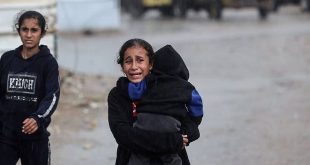This book demonstrates that Dalā’il al-Nubuwwa literature emerged among the circles of early ḥadīth scholars of the late 2nd/8th century.
Dalā’il al-Nubuwwa literature that is centered on narratives from the Prophet Muḥammad’s life has most commonly been viewed, or even dismissed, as the product of popular veneration. Building extensive research on biographical and bibliographical sources, this book demonstrates that Dalā’il al-Nubuwwa literature emerged among the circles of early ḥadīth scholars of the late 2nd/8th century. By analyzing extant texts of Dalā’il al-Nubuwwa regarding their sources, structures, methodological approaches, and selection of contents, it showcases that these works were part of epistemological discourses on prophecy that transcended religious boundaries as well as the dividing lines between various Muslim scholarly disciplines.
About the Author
Mareike Koertner is Assistant Professor of Religious Studies at Trinity College. She earned her Ph.D. (2014) in Near Eastern Languages and Civilizations from Yale University. Her research focuses on Prophetic Tradition (Hadith) and Biography (Sira); the intellectual history of medieval Islam, particularly epistemological discourses on prophecy; interface of religious and literary texts; epistemological discourses on prophecy, and interaction and intellectual exchanges between Jews, Christians and Muslims in the medieval Near East.
Table of Contents
Introduction
1 Historiography, Hagiography, and the Marginalization of Dalāʾil al-Nubūwa Literature
2 Are Miracles Categorically “Popular”?
3 Hagiology as an Analytical Tool
1 The Scholar and the Storyteller?—Quṣṣāṣ in Early Islam
1 Authenticated and Unauthenticated Approaches
2 ʿUrwa b. al-Zubayr and the “Authenticated” Traditions
3 Wahb b. Munabbih and the “Unauthenticated” Traditions
4 Comparative Analysis: The Accounts of the Hijra according to ʿUrwa b. al-Zubayr and Wahb b. Munabbih
4.1 ʿUrwa b. al-Zubayr’s Account of the Hijra
4.2 Wahb b. Munabbih’s Account of the Hijra
4.3 A Detailed Comparison between the Hijra Accounts of ʿUrwa b. al-Zubayr and Wahb b. Munabbih
4.4 Miracles in the Corpus of ʿUrwa b. al-Zubayr
2 Biographies of the Earliest Dalāʾil al-Nubūwa Authors
1 The First Generation
2 The Second Generation
3 The Third Generation
4 The Fourth Generation
5 The Evolution of Early Dalāʾil al-Nubūwa Authors
3 Methodological and Structural Approaches in dalāʾil al-nubūwa Literature
1 Methodologies of Authentication in Early Dalāʾil al-Nubūwa Works
1.1 Al-Jūzajānī’s “Amārāt al-Nubūwa”
1.2 Ibn Saʿd’s “ʿAlamāt al-nubūwa”
1.2.1 The Question of Unauthenticated Materials in Ibn Saʿd’s Ṭabaqāt
1.2.1 Muḥammad’s Encounter with Umm Maʿbad
1.2.2 Muḥammad’s Encounter with Surāqa
1.2.3 The Cobweb and the Pigeon
1.2.2 “Popular” Materials in Ibn Saʿd’s Chapters on the Signs of Prophecy
2 Methodologies of Authentication in Later Dalāʾil al-Nubūwa Works
2.1 al-Khargūshī’s Sharaf al-Nabī
2.2 Abū Nuʿaym al-Iṣfahānī’s Dalāʾil al-Nubūwa
2.3 Al-Bayhaqī’s Dalāʾil al-nubūwa
3 Structure and Arrangement of Dalāʾil al-Nubūwa Works
3.1 Ibn Saʿd’s “ʿAlamāt al-Nubūwa”
3.2 Al-Khargūshī’s Sharaf al-Nabī
3.3 Abū Nuʿāym al-Iṣfahānī’s Dalāʾil al-Nubūwa
3.4 Al-Bayhaqī’s Dalāʾil al-Nubūwa
4 Content Analysis of Early Extant Dalāʾil al-Nubūwa Works
1 Maʿmar b. Rāshid’s “Bāb al-Nubūwa”
2 Ibn Saʿd’s “ʿAlamāt al-Nubūwa”
2.1 Announcement or Prediction of Prophecy
2.1.1 Monotheistic Predictions
2.1.2 Previous Prophets
2.1.3 Predictions by Pagans
2.2 Water- and/or Food-Related “Miracles”
2.3 Natural Phenomena
2.4 Events in the Prophet’s Childhood
2.5 States of the Prophet
2.6 Interactions with the Divine
2.7 Hidden Knowledge
2.8 Material Transformation and Healing
3 Al-Bukhārī’s “ʿAlāmāt al-Nubūwa fī l-Islām”
4 al-Jūzajānī’s “Amārāt al-Nubūwa”
4.1 Food-Related Incidents as “Proofs of Prophecy”
4.2 The Prophet’s Character as “Proof of Prophecy”
4.3 Light as “Proof of Prophecy”
4.4 Interactions with the Divine
5 al-Tirmidhī’s “Bāb mā jāʾ fī ayāt Nubūwa al-Nabī wa-mā qad khaṣṣa Allāh bihi”
5.1 Food/Water Related Incidents
5.2 Natural Phenomena
5 Ibn Saʿd’s “Proofs of Prophecy” and Its Intellectual Landscape
1 Political and Religious Impulses on the Notion of Prophecy
2 Christian-Muslim Encounters in the Early ʿAbbāsid Period
3 Analysis: Approaches to Christian Apologetic Literature
3.1 Christians Addressing Muḥammad’s Prophetic Status and Islam’s Role in Sacred History
3.2 Islam as a Vehicle for Muḥammad’s Personal Gain or Immoral Behavior
3.3 Miracles
4 Ibn Saʿd and Christian Apologetics
5 Muslim Discourse on Pre-Qurʾānic Annunciations of Muḥammad
5.1 The Kitāb al-Maghāzī of Ibn Isḥāq (d. 150/767)
6 Recurring Themes in Later Dalāʾil al-Nubūwa Literature
1 Al-Khargūshī’s Sharaf al-nabī
2 Abū Nuʿaym al-Iṣfahānī’s Dalāʾil al-nubūwa
3 Al-Bayhaqī’s Dalāʾil al-nubūwa
4 Theology in Later Dalāʾil al-Nubūwa Works
4.1 Theology in Abū Nuʿaym al-Iṣfahānī’s Dalāʾil al-Nubūwa
4.2 Theology in al-Bayhaqī’s Dalāʾil al-Nubūwa
5 Conclusion
Epilogue: Dalāʾil al-nubūwa and the Promise of Comparative Hagiology
Appendix: A Detailed Comparison between ʿUrwa b. al-Zubayr and Wahb b. Munabbih
Bibliographic Information
Title: Proving Prophecy, Dalāʾil al-Nubūwa Literature as Part of the Scholarly Discourse on Prophecy in Islam
Author (s): Mareike Koertner
Publisher:
Length: 230 Pages
ISBN: 978-90-04-68734-9
Pub. Date: 21 Dec 2023
 Ijtihad Network Being Wise and Faithful Muslim in the Contemporary World
Ijtihad Network Being Wise and Faithful Muslim in the Contemporary World
